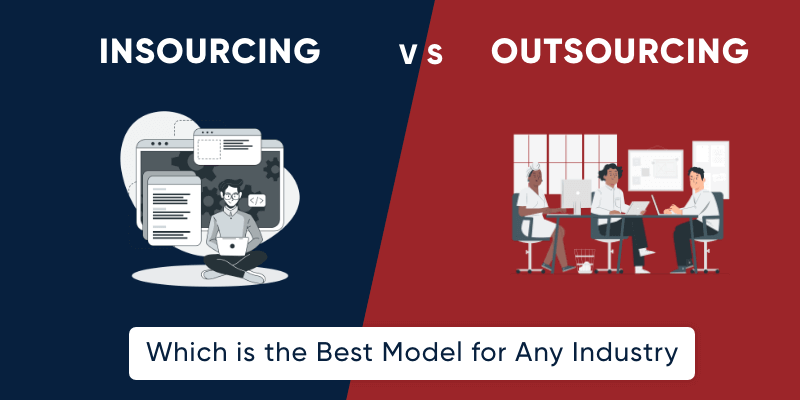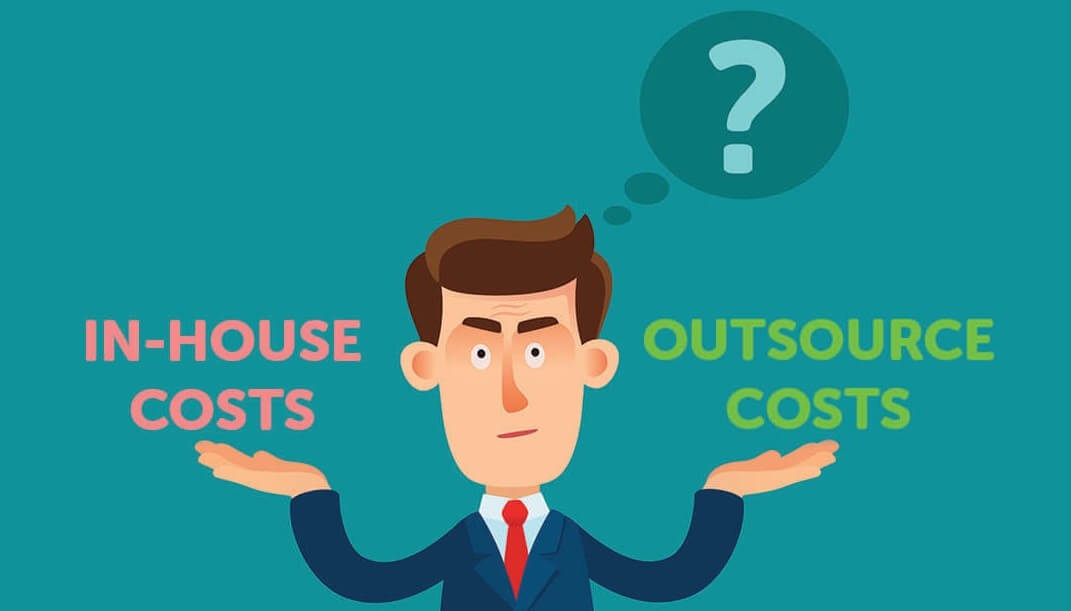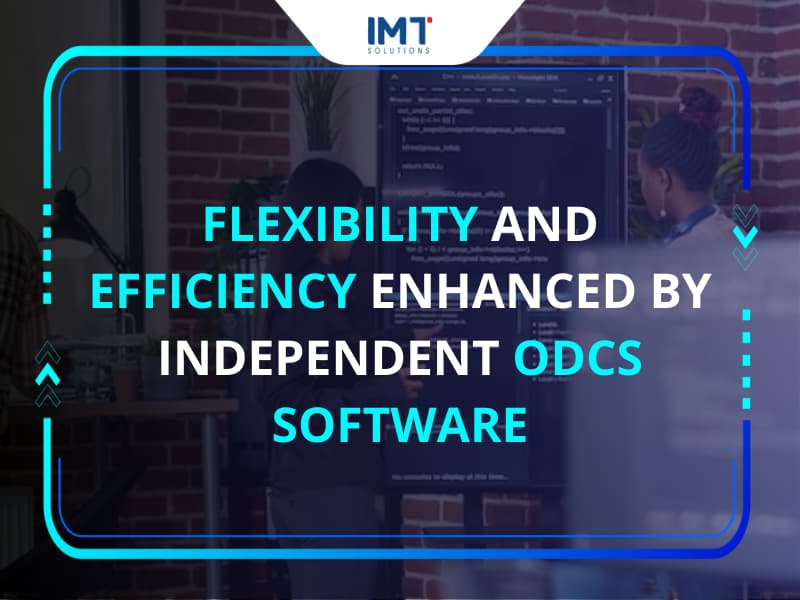Factors to Consider When Choosing Insourcing vs Outsourcing
Deciding between insourcing vs outsourcing activities is a common challenge for many businesses. Each strategy has its own benefits and challenges. Insourcing allows for better control over quality and costs but requires initial investment and human resources. Conversely, outsourcing saves costs and provides access to specialized resources but reduces control and poses potential security risks. This article will provide the essential information to help you make the right choice between insourcing vs outsourcing.
Definition of Insourcing vs Outsourcing
What is Insourcing?
Insourcing refers to the practice of utilizing a company’s internal resources and personnel to handle tasks, projects, or operations that are typically performed internally. This approach involves leveraging the existing workforce and infrastructure to manage and execute various business functions within the organization.
Key Characteristics:
- Insourcing involves managing and executing tasks using the company’s own employees and resources.
- Companies maintain full control over the processes, ensuring alignment with company standards and goals.
- Solutions can be tailored specifically to meet the unique needs of the company.
- Employees are already familiar with the company’s culture, values, and goals, which can enhance collaboration and efficiency.
- Insourcing often requires significant investment in hiring, training, and developing internal capabilities and infrastructure.

What is Outsourcing?
Outsourcing, on the other hand, involves hiring third-party providers to perform tasks, manage operations, or provide services that were traditionally performed by the company’s own employees. This can include anything from IT services to customer support, manufacturing, and more.
Key Characteristics:
- Outsourcing involves contracting external vendors or service providers to handle specific business functions.
- Often reduces operational costs by leveraging lower labor costs in other regions or economies of scale.
- Provides access to a global talent pool and specialized skills that may not be available internally.
- Allows businesses to quickly scale operations up or down based on demand without significant internal changes.
- Enables companies to focus on their core competencies by offloading non-core tasks to external providers.
- Can involve risks related to data security, reduced control over processes, and dependency on external partners.
More detail about What is Outsourcing? Exploring Definition, Types, Historical evolution
Factors to Consider When Choosing Insourcing vs Outsourcing
When deciding insourcing vs outsourcing, companies must consider several factors to determine the most suitable approach for their specific needs. Below are some detailed considerations that can help guide this important decision.

Quality and Control
Insourcing |
Outsourcing |
|
|---|---|---|
Managing quality assurance (QA) |
Having direct control over processes for stringent quality checks and immediate corrections if standards are not met. | Ensuring quality can be challenging, as it requires trust and effective communication with the service provider. Establishing clear service level agreements (SLAs) is essential. |
Maintaining control over processes |
You retain full control over operations, allowing for quick adjustments and more direct management. | You won’t be able to control the process absolutely and sometimes there will be some delay in execution. It depends on the third party. |
Read Enhancing product quality with QA testing
Cost Implications
For costs, we will divide it into 3 small categories: Initial setup costs, long-term costs, hidden costs. In each section, we will divide insourcing vs outsourcing for you to easily follow.
Insourcing |
Outsourcing |
|
|---|---|---|
Initial setup costs |
Establishing in-house capabilities often requires a high initial investment. This includes costs related to recruiting and training employees, purchasing equipment, and setting up the necessary infrastructure. | Outsourcing can reduce initial setup costs, as third-party providers typically have the necessary infrastructure and trained personnel. |
Long-term costs |
While the initial costs may be high, insourcing can lead to long-term savings by eliminating ongoing service fees associated with outsourcing. | You’ll have monthly costs, but you can predict them. However, you need to evaluate whether these costs are sustainable over time compared to the potential savings from insourcing. |
Hidden costs |
Include the ongoing maintenance of technology, employee benefits, and unexpected downtime. | Include additional charges for exceeding service limits, communication delays, and quality control issues. |

Speed and Flexibility of Insourcing vs Outsourcing
Insourcing |
Outsourcing |
|
|---|---|---|
Time to market |
Building in-house capabilities can take considerable time, particularly if specialized skills are needed. | Outsourcing can accelerate time to market as providers often have ready-to-deploy resources and expertise. |
Ability to scale operations quickly |
Scaling operations can be slow due to the need for additional hiring and infrastructure expansion. | Provides greater flexibility to scale up or down based on demand without the need for significant internal changes. |
Flexibility in adapting to changes |
Internal teams may have more difficulty rapidly adapting to changes due to existing workflows and structures. | Outsourcing partners can often adapt more quickly to changing business needs due to their specialized focus and experience. |
Expertise and Innovation
Insourcing |
Outsourcing |
|
|---|---|---|
Access to specialized skills |
May require significant investment in training and development to build the necessary expertise internally. | Allows access to a global talent pool with specialized skills and experience that may not be available in-house. |
Staying updated with industry trends |
Internal teams may need continuous education and training to stay current with industry advancements. | Outsourcing partners are often at the forefront of industry trends and can provide cutting-edge solutions. |
Driving innovation and continuous improvement |
Internal innovation can be more closely aligned with company goals and culture but may lack the diverse perspectives of an external team. | Outsourcing partners can introduce new ideas and innovative practices gained from working with various clients across different industries. |

Pros and Cons of Insourcing vs Outsourcing
Insourcing |
Outsourcing |
|
|---|---|---|
Pros |
|
|
Cons |
|
|
By carefully evaluating these factors, companies can make a well-informed decision that aligns with their strategic objectives and operational needs. Insourcing vs outsourcing have their advantages and challenges. Therefore, the right choice often depends on the specific context and goals of the business. If you’re interested in outsourcing, we encourage you to read the article “05 Questions before choosing an outsourcing company”





